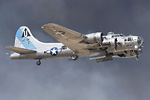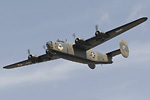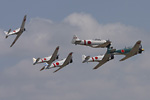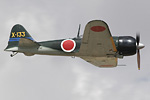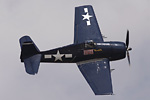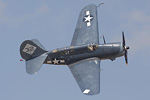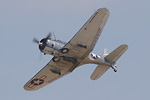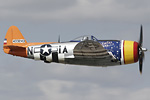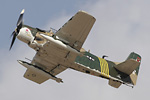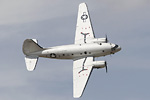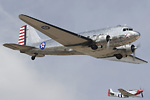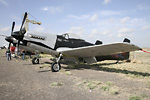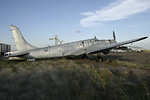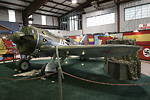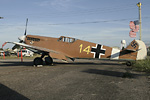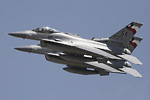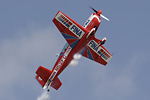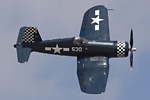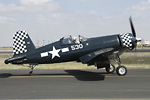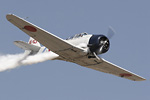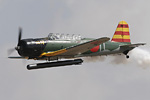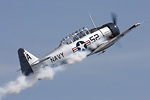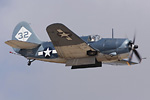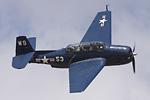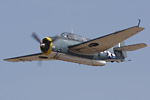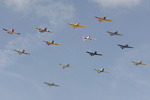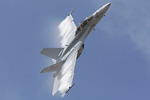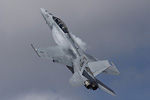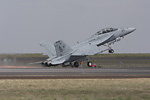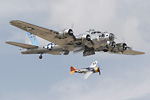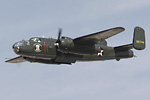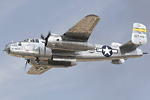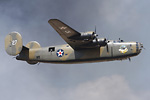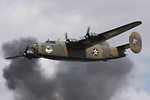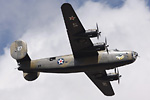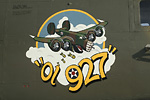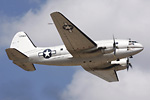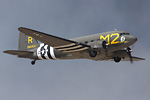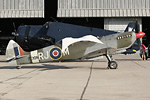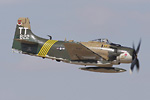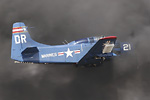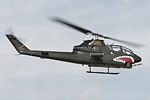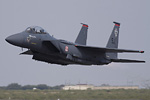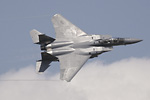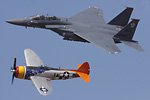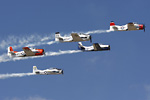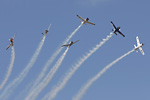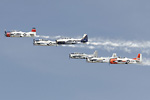Being an eclectic and enjoying all facets of aviation, and like most enthusiasts having limited resources to start with, sometimes I have to sacrifice a show and miss it over the years not because it’s not worth attending, but because I believe others might be better, or because, like Oceana in the last couple of years, I knew that I wouldn’t have the chance to see a particular type of aircraft again. The CAF’s Airsho’ (yes, without the ‘s’) in Midland, TX, is the prime example of an airshow I’d like to make every year, but haven’t been able to attend since 1996! It’s a well-organized, professional airshow centered on WWII warbirds that never fail to deliver a good spectacle, although its location right in the middle of the US, far from the usual travel destinations in this country, might contribute somewhat to make it relatively unknown to many. This year was a watershed for the organization, which has commemorated its 50th anniversary. So I thought a visit to Midland, TX was more than overdue, especially because I wanted to see Ol’ 927, the B-24A just recently restored back to its original bomber configuration. |
|
|
Before getting into the details of the show, a few words about the Commemorative (formerly Confederate) Air Force should help clarify a few things. In 1957, Lloyd Nalen gathered a small group of ex-service pilots in the Rio Grande Valley of Texas to purchase a P-51D Mustang, ‘Red Nose’. They were shocked to find that the aircraft were being rapidly and systematically destroyed, and decided to preserve for future generations an example of every WWII aircraft they could acquire. Today, the CAF is comprised of more than 9,000 members organized into 77 units in 28 states and four foreign countries, and operate around 150 aircraft, including the only B-29 and SB2C Helldiver still flying. Since 1991 its headquarters and museum facilities are adjacent to Midland International Airport (formerly they were at Harlingen, also in Texas), which is appropriate since this airport was the site of the world’s largest bombardier training base during World War II. In tribute to the importance of its mission, and something definitely curious, by act of the Texan state legislature, the CAF is the official Air Force of Texas. |
The airshow this year was staged in September 29-30, a choice that unfortunately clashed with the high-profile Gathering of Mustangs in Columbus, OH, which drained the whole country of warbirds, especially P-51s. A morning walk around the static displays before the afternoon airshow made clear that some familiar sights at the airshow, like P-51D ‘Gunfighter’, were nowhere to be seen. However, most of the CAF’s current collection of warbirds was on hand, and I was particularly pleased to see again their F-82 Twin Mustang (a plane most would love to see flying again, but that won’t for many reasons), B-23 Dragon, SBD Dauntless (bomb-armed, very nice), SB2C Helldiver, F6F Hellcat, A6M Zero, Me-109 (HA-1112), and, of course, B-29A ‘Fifi’ (more on her later). Despite being the only P-51 this year, ‘Red Nose’ was by far and away the warbird that flew the most, especially on mornings when everything else was on the ground, and was usually in the air right before the airshow started, putting me in a small dilemma of having to choose between eating and taking pictures (by the way, the Airsho’ Flightline Chalets provide excellent value for the money – the food available there was a welcome breath of fresh air when compared to the greasy stuff we have to endure during other such events…) |
|
|
The airshow started both days around noon with a fly-by of two (one on Sunday) ANG F-16C Fighting Falcons from the 149th FW, 182nd FS ‘The Lonestar Gunfighters’, based at Lackland AFB, TX, flown by Lt. Col. Effeson and Lt. Col. ‘Gunner’ Kelly. This fighter wing is the only ANG training unit for F-16 pilots, but in the past its component fighter squadron flew F-84s in combat, and had the distinction of being the first ANG unit to shoot down a Soviet MiG-15 during the Korean War. Soon thereafter, the only aerobatic display of the whole weekend, Fina’s Extra 300L piloted by Jan Collmer, performed his aerial routine before the crowd. It’s the 11th year Fina has been the title sponsor of this event, and the 1996-built Extra has been since its construction Fina’s billboard in the sky. The third display of the day was provided by a very nice FG-1D Corsair from the CAF Corsair Sponsor Group, flown by Ray Kinney, and based at Dallas, TX. This Corsair, N9964Z, manufactured by Goodyear at Akron, OH, in July 1945, showcased some of the maneuvers the FG-1D can perform, but, unfortunately like most other US warbird performances I can remember, it was not very dynamic – why can’t the US pilots pull a page out of the Duxford displays? |
After recovering the Corsair, the Tora Tora Tora’s six Zeros, four Kates, and one Val replicas swarmed the display box with plenty of smoke and noise. Perhaps the marquee setpiece of the whole show, the mayhem they are able to create conveys the feel of the Japanese strike on Pearl Harbor. This year, only a modified Texan (fittingly, since the Tora Tora Tora A6M replicas were originally Texans too) masquerading as a North American P-64 (also known as the NA-68, of which six were built for Thailand, but never delivered due to the Japanese invasion) rose to the skies to oppose them. Afterwards we had a stock AT-6 Texan, only this was the Navy version, the SNJ, flown by Clyde Zellars. Zellars has a surface waiver that allows him to fly as close to the ground as he wishes, which allows him a wider latitude of maneuvers, some real close to the deck. |
|
|
The following act continued to highlight the importance not only of the AT-6 to the war effort, but of all trainers, with multiple AT-6s, T-34s, BTs, and C-45s flying in formation. While they were going around, one could hear a loud noise emanating from some big radials, which announced the next big theme of the show: the Pacific Theater. I’ve always been a big fan of naval aircraft, particularly Grumman’s. So it was definitely nice to see a Wildcat (N5833, actually an FM-2 built by GM’s Eastern Aircraft Division, painted in FAA colours, and sponsored by Carter Teeters), an F6F Hellcat (N1078Z, from the Southern California Wing), and two Avengers (actually TBM-3Es, built by Eastern - N5264V, from the Missouri Wing, and NL53503, from the Rocky Mountain Wing). Other naval aircraft that were also on display were the aforementioned FG-1D Corsair, the only flyable SB2C Helldiver in the world (NX92879, from the West Texas Wing), a gorgeous SBD Dauntless (NL826A, from the Dixie Wing), and an original A6M3 Zero (N712Z, also a Southern California Wing bird, but with a P&W R-1830-75 engine). Unfortunately, a common visitor, the F8F Bearcat from the Southern California Wing, was down at Camarillo with a leaky fuel tank. |
The first fast jet display each day was provided by a USN VFA-106 ‘Gladiators’ F/A-18F Super Hornet, flown Saturday by Lt. Dave ‘SH8’ Cassalia and Lt. John ‘TC’ DeSplinter, and on Sunday by Lt. Matt ‘SHILOC’ Morton and Lt. Josh ‘JTITA’ Hammond. On the first day, there was a 30kt. head wind, and the Rhino performed by far and away the most impressive takeoff I’ve ever seen it perform – the aircraft was pointing almost straight up soon after leaving the ground with very little airspeed. However, it was later brought to my attention that it might have had a tail strike (more precisely, the hook might have scraped the ground) on rotation, a rumour that was emphatically denied by the pilots. Anyway, a different F/A-18F was flown on Sunday (AD232/166659 instead of AD270/166623), and, although this doesn’t prove or mean anything in special, it added to the scuttlebutt about what happened on Saturday! It was later joined by the FG-1D and the FM-2 for the Navy Tailhook Legacy Flight, and together they performed several passes. |
|
|
Then it was time for the heavy iron, and this is what sets apart the CAF ‘Airsho’ from other similar warbird events – the number of bombers they are able to bring each year to their airshow. At Duxford and Chino, just to mention two other popular warbird airshows, there are huge numbers of fighters, but few bombers. In a down year like 2007, the CAF still managed to attract a B-17 (N9323Z ‘Sentimental Journey’, from the Arizona Wing), B-24 (N24927 ‘Ol’ 927’, from the B-29/B-24 Squadron, based locally at Midland), two B-25s (N27493 ‘Miss Mitchell’, from the Minnesota Wing, and N333RW ‘Special Delivery’, from the Lone Star Flight Museum), and two A-26s (N9682C, from the Sierra Hotel A-26 Sponsor Group, and N240P, from the Ranger Wing). |
The B-24A in particular was the biggest single attraction of this year’s event. Formerly LB-30 ‘Diamond Lil’, it was one of the twenty B-24As originally ordered by the USAAC that were diverted to the UK and pressed into service as a coastal patrol and defense aircraft (‘LB’ meaning ‘license built), with P&W R-1830-31 engines. However, Ol’ 927 was never delivered to the British, being destined for the Eagle Nest Flying Training Center, which was operated by Transcontinental & Western Airliners (later TWA). After crashing in July 24, 1941, it was converted into an experimental transport version, and soldiered with Consolidated during the rest of the war. It was in this configuration that the Liberator has been flown since then, but in 2006, the decision was taken to return it to its original configuration, and the CAF effort, spearheaded by Gary Austin, resulted in the superb aircraft we can see today. The skin that covered the former waist gun positions and the aft belly tunnel gun, together with the bulbous fairing in the tail installed by Consolidated, were removed. Finally, the interior was stripped out, and bomb racks and machine guns were installed (the bomb bay doors will be added later). |
|
|
The bombers were not alone in the sky during the “European Theater’ part of the airshow. In the same circuit, one could also see many transport aircraft, the C-46 Commando ‘China Doll’ (N53594, from the Southern California Wing) being the largest example. Besides it, four C-47s (N45366, actually a C-53 Skytrooper - a C-47 optimized for troop transport - from the Island Empire Wing, N227GB from the Great Lakes Wing, N151ZE, actually an R4D - the USN version - from the Dallas/Fort Worth Wing, and N47HL from the Highlands Lakes Squadron) and two C-45s (N165ZA, from the Heartland Museum Flying Vehicles, and N40074, from the Cimmaron Strip Wing) took their turns flying in front of the public. The fighter component included only two aircraft: P-51D ‘Red Nose’ (NL10601), from the Dixie Wing, and the absolutely gorgeous P-47D ‘Tarheel Hal’ (NX4747P) from the Lone Star Flight Museum. An Mk.IX Spitfire (actually an TR.IXc, N308WK, one of the six Spitfire trainers that served with the Irish Air Force) was also available on Saturday, but, due to the 30kt. wind mentioned before, the pilot decided to stick to the ground. |
The next acts involved aircraft that took part in the Korean and Vietnam War, and, at this stage of the airshow, one could see at different moments two (only the first on Sunday) AD Skyraiders (NX91945 ‘Uncle Ho’s Nightmare’, an AD-4NA based at the Lone Star Flight Museum, and NX188BP, an EA-1E from the Olympic Flight Museum), P-51D ‘Red Nose’ (which also performed an aerobatic display), the two aforementioned A-26s, a couple of AT-6s (N9272C and N103LT), two O-2s (N19GH and N1166B), another C-47 (N2805J as an AC-47 Spooky gunship), the “bad guy”, an L-39 Albatros (N6380L), and two UH-1 Hueys and an AH-1 Cobra. The Vietnam setpiece, we must add, is due largely to the efforts of CAF Col. Gregg Baiano, who provided the three helicopters mentioned above, so the CAF could recreate some of the sights and sounds of that conflict. |
|
|
The next to last display was provided by the USAF F-15 Strike Eagle Demo Team out of Seymour Johnson AFB. Flown in 2007 by Capt. Al ‘Jewel’ Kennedy and Capt. Jack ‘Woody’ Stallworth, it maintains the tradition of excellent Eagle displays, which were formerly provided only by F-15C crews. The Strike Eagle will soon provide the only F-15 display in the airshow circuit, with a second team from Mountain Home to replace in 2009 the current F-15C West Demo Team from Eglin AFB. Its display is definitely different when compared to the F-15C’s, with an emphasis on maneuvers that highlight its air-to-ground capabilities. Fittingly, P-47D ‘Tarheel Hall’ (piloted by Reg Urschler) flew with the Strike Eagle in the USAF Heritage Flight, both airplanes having been developed originally as fighters, but which later on in their careers proved their worth as air-to-ground platforms. |
The airshow was closed each day by the featured act at CAF Airsho’ 2007, the Trojan Horsemen, the only six-ship T-28 demo team in the US. I had never seen them in the air, and I was pleased with their routine of precision formations and single-ship aerobatics. It was a welcome break from the omnipresent Thunderbird/Blue Angles demo at the end of every US large show, and proved that an airshow doesn’t necessarily need a military demo team to attract a large number of patrons. Of course, most airshows don’t have a B-29 to showcase, although ‘Fifi’ this year was inside a hangar in need of four new Wright R-3350s. The powerplants themselves have been located in a site in Florida, but the CAF need a donation (they thought they had the money until a donor last year withdraw his pledge) to make ends meet. If you by any chance have two million dollars sitting idle in your bank account, I can’t think of anything better to do with it than providing the old lady with the means to rise to the sky again. |
|
More photos
| The author would like to thank Kay Crites and the entire CAF Media Personnel for their kindness and help during his coverage of the airshow. |



